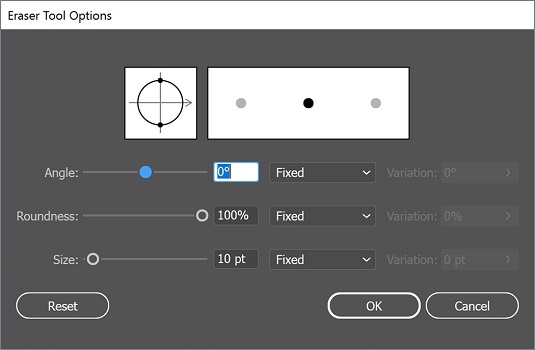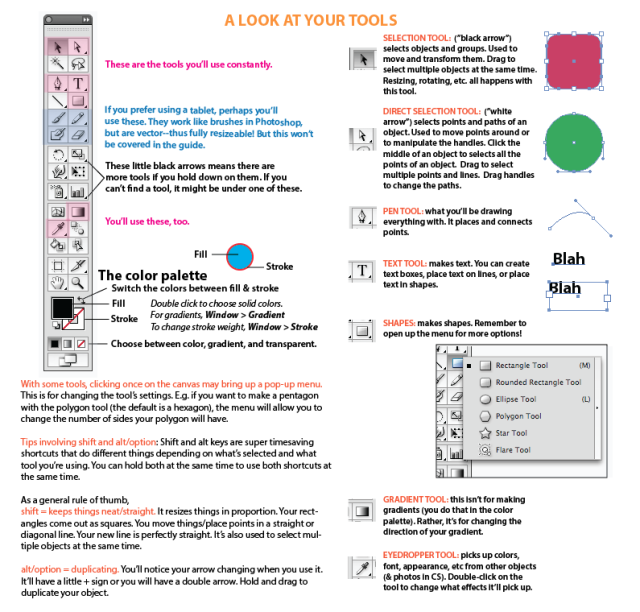
- Using adobe illustrator for dummies pdf pdf#
- Using adobe illustrator for dummies pdf update#
- Using adobe illustrator for dummies pdf pro#
Then, under the advanced tab, hit 'custom' to the right of 'Preset'. Then create a new preset by hitting the + button, choose an initial format that supports transparency flattening such as X-1a:2001 We get the best of both worlds - print-compliant files and editability. The solution: build a custom export profile that automatically does this for us. This leaves us with two copies, as mentioned above.
Using adobe illustrator for dummies pdf update#
This means we create a lot of different business cards and update the working file every time we onboard someone new. You can't edit text after it's been outlined.
Using adobe illustrator for dummies pdf pdf#
They need to receive a press-ready PDF that outlines text containing those fonts, otherwise, it'll default to a system font.
Using adobe illustrator for dummies pdf pro#
Moo doesn't have our primary brand typefaces, Big John Pro and Gilroy, on their press computers because it's a licensed font. You essentially have to have two copies - one that you've outlined and one that you can keep as a working version.Įxample: We print our business cards through Moo. Generally speaking, it's a good idea to outline all of your text when you export PDFs in Illustrator. You can create a Adobe Illustrator PDF custom export option that outlines text automatically upon exportĬreating a custom PDF export preset that automatically outlines all of your text
 If it's non-interactive and you have a plan for accessibility, outline your type before exporting.Īuto outline Illustrator text upon PDF export. X-3:2002 if you're too lazy to flatten your transparency yourself. This is still the best choice overall, but be sure to flatten transparency yourself if you're sending it to print. Or if you intend on printing but you don't use any weird transparency-altering effects like drop shadows etc. X-4:2008 if you're sending it to a client. Use High-Quality Print if you're sending it to the printer in your bathroom. Use Press Quality if you're sending it to a commercial printer. X-1a:2001 if you're sending it to Moo, Sticker Mule, or a printer that cares about file size. This may not be what computer scientists care about or what your printer will necessarily want, so take it with a grain of salt. Scroll down if you just care about my findings and not the journey I took to get there.įor me, I hold three big things super important. While I'm not overly technical in this article, I know a lot of people want to get to the meat and potatoes. I'll save you a ton of research and time. Turns out, there really isn't a lot of easily digestible information on the internet.Īpparently, people don't find PDF export standards sexy enough to write about. I start every semester off with the same lengthy soapbox about how hard drives and pixels work, and blah blah blah. Then there are those who never wade deeper than regurgitating Instagram trends and putting random borders around their work because they just "thought it looked empty without it". That being, the most successful are those who have a deep comprehension and command of visual language. Understanding the inner-workings of the tools and methodologies we use is the natural Great Filter of the design industry. I've been both professionally using AND teaching x-1a:2001 as a standard for almost a decade and I have no idea why, what it means, and if it's still even relevant.ĭesign Research is a fundamental principle that I try to instill into my students. As I was driving home I had a realization. I rambled off some passed-down knowledge of long-forgotten origin that a design professor from a different life must have maybe told me: PDF/X-1a:2001.
If it's non-interactive and you have a plan for accessibility, outline your type before exporting.Īuto outline Illustrator text upon PDF export. X-3:2002 if you're too lazy to flatten your transparency yourself. This is still the best choice overall, but be sure to flatten transparency yourself if you're sending it to print. Or if you intend on printing but you don't use any weird transparency-altering effects like drop shadows etc. X-4:2008 if you're sending it to a client. Use High-Quality Print if you're sending it to the printer in your bathroom. Use Press Quality if you're sending it to a commercial printer. X-1a:2001 if you're sending it to Moo, Sticker Mule, or a printer that cares about file size. This may not be what computer scientists care about or what your printer will necessarily want, so take it with a grain of salt. Scroll down if you just care about my findings and not the journey I took to get there.įor me, I hold three big things super important. While I'm not overly technical in this article, I know a lot of people want to get to the meat and potatoes. I'll save you a ton of research and time. Turns out, there really isn't a lot of easily digestible information on the internet.Īpparently, people don't find PDF export standards sexy enough to write about. I start every semester off with the same lengthy soapbox about how hard drives and pixels work, and blah blah blah. Then there are those who never wade deeper than regurgitating Instagram trends and putting random borders around their work because they just "thought it looked empty without it". That being, the most successful are those who have a deep comprehension and command of visual language. Understanding the inner-workings of the tools and methodologies we use is the natural Great Filter of the design industry. I've been both professionally using AND teaching x-1a:2001 as a standard for almost a decade and I have no idea why, what it means, and if it's still even relevant.ĭesign Research is a fundamental principle that I try to instill into my students. As I was driving home I had a realization. I rambled off some passed-down knowledge of long-forgotten origin that a design professor from a different life must have maybe told me: PDF/X-1a:2001. 
One of my students asked me what the proper way of exporting to PDF from Illustrator was. Today after critique in my Typography II class I asked my students to turn in PDF deliverables.






 0 kommentar(er)
0 kommentar(er)
